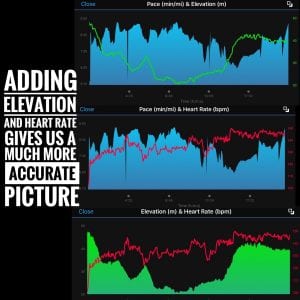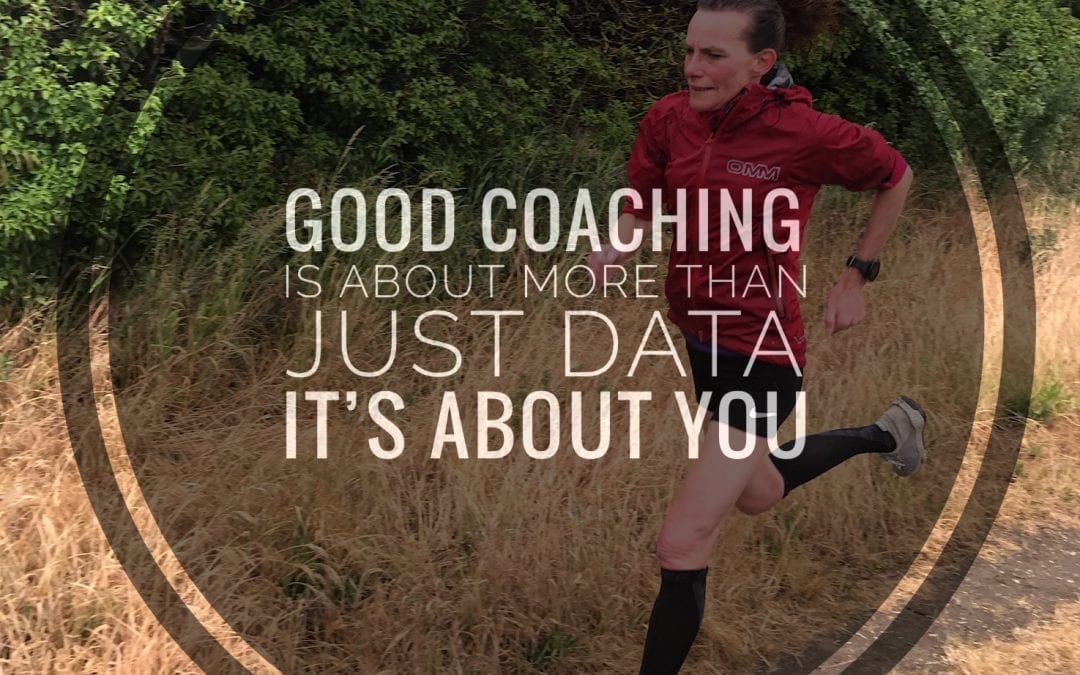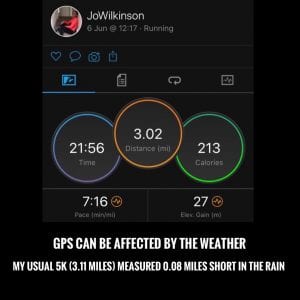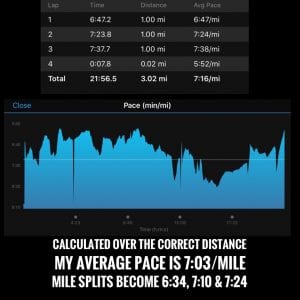Good coaching is about more than data – it’s about people. It’s about you.
I am the biggest geek when it comes to running data. As a coach I love to spend hours analysing detailed breakdowns of running sessions. But I also know that the most important feedback is something you can’t get from your GPS fitness watch. It’s how did you feel. And only you can tell me that.
You are more than just a string of data analysed by an algorithm.
Good coaching should be based on regular communication and two-way feedback. If your coach solely relies on data and doesn’t ask you how you feel after each run then it’s probably time to get a new coach. Or save your money and stick with the algorithms on your GPS watch.
The data available during and after each run has grown exponentially with improvements in technology. I’ve been a runner long enough to remember when the only way to measure your run was to drive round afterwards. Not so good for off-road runs! Or with a piece of string and a map. You calculated pace by dividing the time by the distance. Nowadays your watch will contemporaneously measure distance, pace, heart rate and elevation throughout your run.
As an online coach this gives me a very detailed overview of the progression of each run. But like all data, it is only useful if you know what to look for and more importantly, you know what it DOESN’T tell you. The benefits and shortfalls in data are perfectly illustrated by my 5k progression run last weekend.
The aim was to start with a disciplined pace and gradually increase the effort to finish strongly.
So how did I do?
What does the data tell us?
The first problem is obvious. My GPS recorded my run as 3.02 miles in 21:56. This was the same 5k (or 3.11miles) course I run every week. Despite the huge advances in GPS technology, it’s accuracy can still be affected by adverse weather conditions. Last weekend’s weather was heavy clouds and rain. As a result by the end my GPS was out by 0.08mile.
This means that my watch recorded an average pace of 7:16/mile. However, if you calculate it over the correct distance my actual pace was 7:03/mile and the mile splits were approximately 6:34, 7:10, 7:24 instead.
Faster average pace overall but still the reverse profile of a good progression run.
Each mile getting progressively slower not faster.
Thankfully as a coach, I know that pace is not always the best way to assess your run. Pace is affected by all kinds of factors. The most obvious being elevation. It’s far easier to run downhill than up. This course has a U-shaped profile. When you overlay elevation on top of pace you get a very different impression of the run.
As a coach  I cast an eye over the elevation and course profile of each run. Here’s where data analysis can be very helpful. Training Peaks uses Normalised Graded Pace (NGP) to help calculate the impact of elevation on pace. For this run the NGP analysis calculates the pace for each mile as 6:50, 7:14 and 7:06.
I cast an eye over the elevation and course profile of each run. Here’s where data analysis can be very helpful. Training Peaks uses Normalised Graded Pace (NGP) to help calculate the impact of elevation on pace. For this run the NGP analysis calculates the pace for each mile as 6:50, 7:14 and 7:06.
A much better but still not perfect progression run!
The most important part of the jigsaw for good coaching
However, we still don’t have the whole picture. The biggest factor on this run was the howling wind blowing directly into my face all the way on the final mile uphill. You can’t get that information from GPS data and running analysis. I need you to tell me.
But the final and most important part of the jigsaw is still missing.
How did you feel?
 The secret to good coaching is simple. It’s about you. How you felt on each run is as important feedback as the objective data. What might look good on paper (or more accurately online) might have felt much harder in practice. And vice versa. Your pace might be good but your legs tired and sore. This kind of feedback is essential to review training more accurately and plan your next training session more appropriately. It ensures I can give you the positive feedback your hard work and effort deserves. And it ensures you get the rest and recovery you need to avoid injury.
The secret to good coaching is simple. It’s about you. How you felt on each run is as important feedback as the objective data. What might look good on paper (or more accurately online) might have felt much harder in practice. And vice versa. Your pace might be good but your legs tired and sore. This kind of feedback is essential to review training more accurately and plan your next training session more appropriately. It ensures I can give you the positive feedback your hard work and effort deserves. And it ensures you get the rest and recovery you need to avoid injury.
There’s no denying that this run looked pretty poor from the initial data. But in truth I felt really strong throughout. My legs felt great. The start felt steady and controlled. Best of all despite the wind and the gradient I felt really strong up in the final mile.
Now as a coach I finally have the whole picture of the run.
Good disciplined start and very strong pace to finish into the wind. Obvious increase in effort over the final mile which continued after the crest of the hill to the finish.
Running data has opened up a world of information to us. It can give you detailed analysis and feedback to inform your training. But never forget that the most important feedback comes from you.



